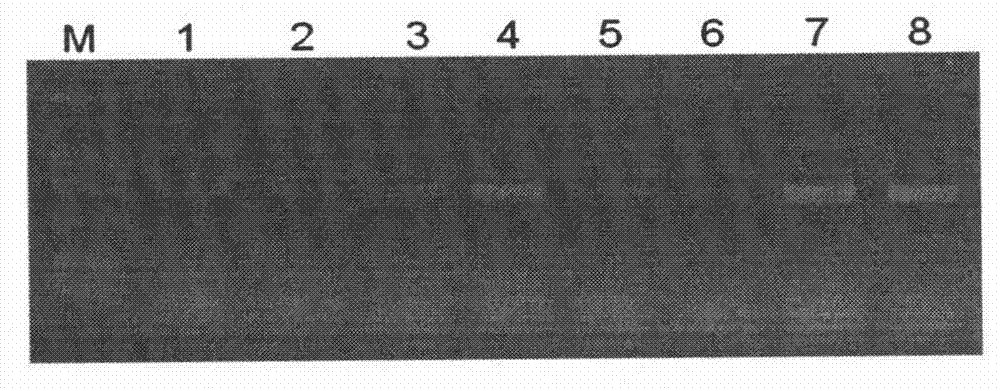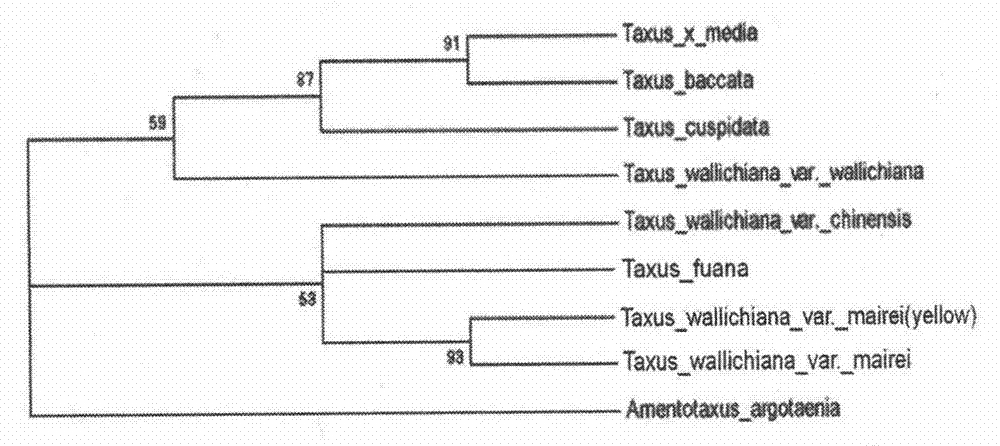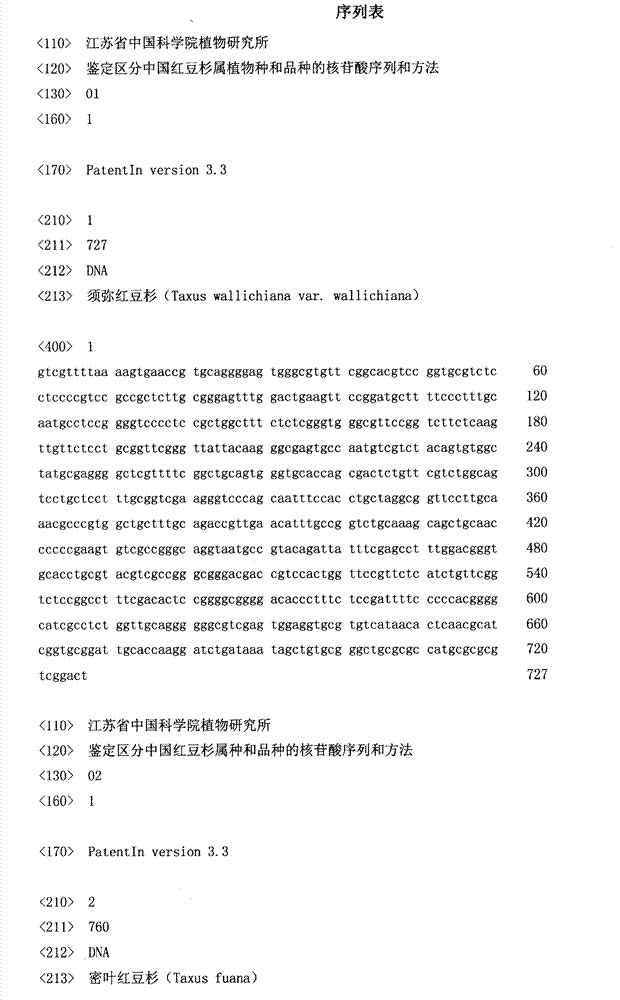Nucleotide sequence and method used for identifying and differentiating species and varieties of Taxus chinensis
A nucleotide sequence and yew technology, applied in biochemical equipment and methods, microbiological determination/inspection, DNA/RNA fragments, etc., can solve the problems of poor universality of primers, limited test conditions, and high operation requirements
- Summary
- Abstract
- Description
- Claims
- Application Information
AI Technical Summary
Problems solved by technology
Method used
Image
Examples
Embodiment
[0030] In this example, the rDNA ITS1 sequences of 8 taxus germplasm resources from different provenances were determined, which are respectively: 5 species (and 1 natural mutant line) under the genus Taxus in China, including Taxus dense-leaved (Taxus fuana), Taxus wallichiana var. wallichiana, Taxus wallichiana var. chinensis, Southern yew (Taxus wallichiana var. mairei), Southern yew (Taxus wallichiana var. .mairei yellow), Northeast yew (Taxus cuspidata), and two foreign species, Mandia yew (Taxus x media) and European yew (Taxus baccata). Taxus Amentotaxus argotaenia is an outgroup (GenBank serial number is AF259285.1). The method adopted includes the following specific steps:
[0031] (1) Total DNA extraction
[0032] The leaves, leaf (flower) buds or stems of the plants to be tested were taken, treated with sterile water, ground into powder in liquid nitrogen, and the total DNA was extracted with a QIAGEN kit.
[0033]The specific method is as follows: ① Take 2-3g ti...
PUM
 Login to View More
Login to View More Abstract
Description
Claims
Application Information
 Login to View More
Login to View More - R&D
- Intellectual Property
- Life Sciences
- Materials
- Tech Scout
- Unparalleled Data Quality
- Higher Quality Content
- 60% Fewer Hallucinations
Browse by: Latest US Patents, China's latest patents, Technical Efficacy Thesaurus, Application Domain, Technology Topic, Popular Technical Reports.
© 2025 PatSnap. All rights reserved.Legal|Privacy policy|Modern Slavery Act Transparency Statement|Sitemap|About US| Contact US: help@patsnap.com



